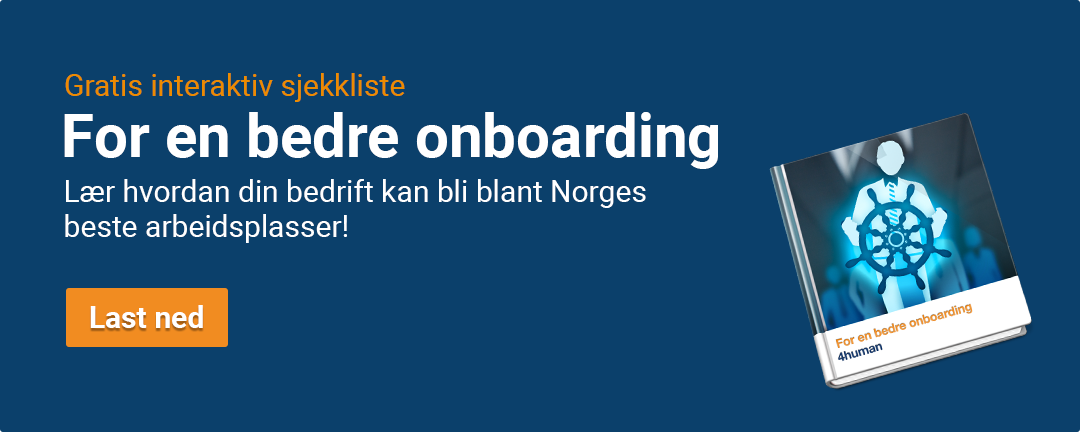You spend a lot of time and effort finding the right candidate for your business. But have you thought about what happens after the new employee signs the employment contract? Do you conduct any kind of onboarding or follow-up interviews? Do you perhaps send information about the company to the new employee? Or do you do nothing until he or she shows up at the office on the first day of work?
Onboarding process - What happens after contract signing?
It's important to have a complete picture of a onboarding process. Most companies place great emphasis on conducting a good recruitment process so that they can secure the best candidates. Few companies focus as much on the pre- and onboarding phase, which is extremely important for a successful new hire. A good onboarding will make the new employee feel cared for and will increase the likelihood that the person will be more motivated to take up the new position.
For a free onboarding demo, you can check at the bottom of the page.
The 3 phases of an onboarding process
- Recruitment and Preboarding
- Onboarding
- Talent development
A strategic onboarding program starts when your company is thinking about hiring a new employee. Already at this stage, you need to think about what the goal of the new hire is. The needs assessment serves as the foundation for choosing a new employee. If you make the wrong choice, it will shift throughout the recruitment process and may prevent you from making the right decision. What is needed to complete this job?
Key questions you should ask yourself are:
- Are you hiring a new employee to replace another?
- Are you hiring a new employee to change the team composition and culture of your business?
- Are you hiring a new employee to fill a new role?
- What qualities are required and what skills should the new employee possess. Perhaps personal qualities are most important?
- Is your need long-term or short-term?
- Do you have the finances to hire?
- What is the expected ROI (Return of Investment) of this new hire for the business?
- What responsibilities should the new employee have?
- Where in the business should the new employee be placed and under what management?

1. Recruitment and preboarding
If you're responsible for the recruitment and orientation of new employees, you're helping to create a first impression of the company for that candidate. You represent the entire business to every new hire, so your job is critical and extremely important. The business only has one chance to make a good first impression.
It is important to have a strategic and comprehensive onboarding program that is implemented in your company. When you design the job advertisement, you will already tell the relevant candidates a lot about the company's culture and values. This is where the candidate will form an impression of your company.
Ask yourself these questions before you post the job ad. When the candidate submits the application, is it a simple system you have, or is it difficult for the candidate to submit a good application and CV? Perhaps the candidate doesn't get to say what they can contribute to your company? Were you well prepared when the candidate turned up for the interview? Had you informed the receptionist or others that you were holding an interview today? Were you punctual at the agreed time and did you read the CV and application thoroughly?
All of this tells the candidate and the other candidates about your company's culture and values. If you make a good impression, you'll create a good reputation for your business and increase your chances of attracting good potential employees.
The pre-onboarding phase starts when the contract is signed and lasts until the first day on the job. Once the candidate has accepted the job offer, he or she is also very ready to learn more about your company. That's why it's a good idea to start the pre-onboarding phase immediately after signing the contract.
Use the preboarding phase to give out a little bit of information about your business, use an onboarding application, as well as sending pleasant surprises in the post and keeping in touch by phone and email. This will give a professional impression of your business, as well as showing that you are digital and keeping up with the times. Bente Sollid Storhaug, series founder and investor says that: Several surveys show that employees choose companies with a high degree of digital maturity.
Information that the new employee will find inspiring and useful is, for example, a welcome greeting from the company. Tell them about the company's visions and goals, what products you sell, about the company's business activities. Do you have a social commitment such as Save the Children or are you concerned about the Rainforest? This tells us about the attitude, values and social commitment of your business.
2. Onboarding
A good and effective onboarding increases the chances that the new employee will thrive in their new position, in addition to you as a manager being able to ensure rapid productivity in the business. But how can you contribute to good onboarding?
It's easy to forget that you have a new employee. Especially after a few weeks have passed. As a manager, you're often in a hurry, and you often find that "the situation has been resolved" when the new employee has signed a contract, had their first day of work and started training. Now is not the time to rest on your laurels, it's important that you, as the immediate manager, take active responsibility for making this new hire a success. It's important to have regular checkpoints and help the employee to improve their work tasks. You can also improve employees' tasks and routines by using digital learning such as courses, microlearning and quizzes.
3. Talent development
The meetings you set up with new hires don't have to be "big and formal meetings", but regular follow-ups with the new hire over the next few months are critically important. If a disgruntled new hire isn't picked up, the worst-case scenario is that the whole thing results in an unwanted turnover, and that's before a year has even passed! By implementing regular checkpoints throughout the first year, and plotting them in the line manager's calendar, you can make sure you retain them as productive and happy colleagues.
Therefore, use the trial period actively. Have clear expectations for your employees. Also note that you can also learn from this onboarding process. What worked? What didn't work? Or what can be improved?
Another important element in this phase is to ensure that new employees become productive quickly and that productivity levels remain high. The key is to help the new employee network with key people, both across and above and below the organization. You'll never be good on your own. You're always dependent on important key people to be able to succeed in your new job, and as a manager, with the right training, you can facilitate this.




